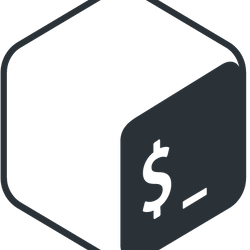
Encountering Cloudflare Error 1016 can be frustrating for website owners and visitors alike. This error appears when Cloudflare cannot resolve your origin web server’s IP address, effectively making your website inaccessible. When visitors try to access your site, they’ll see an error page instead of your content, potentially impacting your business and reputation.
The error message typically displays as “Error 1016: Origin DNS error” and indicates that Cloudflare is unable to establish a connection with your server due to DNS resolution problems.
What Causes Cloudflare Error 1016?
Several factors can trigger Error 1016, but they all relate to DNS (Domain Name System) resolution issues:
- Missing DNS A record: The most common cause is a missing A record that should point to your origin IP address
- Unresolvable CNAME records: A CNAME record in your Cloudflare DNS points to an external domain that cannot be resolved
- Load balancer configuration issues: Unresolvable origin hostnames in your Cloudflare Load Balancer pools
- Spectrum app configuration: When creating a Spectrum app with a CNAME origin without first creating the necessary CNAME on the Cloudflare DNS side
- Missing DNS records in specific setups like Cloudflare for SaaS or Workers subrequests
Impact of Error 1016 on Your Website
This error can significantly affect your online presence:
- Complete site unavailability: Visitors cannot access your website
- Business disruption: For e-commerce sites, this means lost sales and revenue
- Damaged reputation: Persistent technical issues can erode user trust
- Potential SEO implications: Extended downtime may impact search rankings
Diagnosing Cloudflare Error 1016
Before implementing solutions, it’s crucial to diagnose the specific cause:
Check Your DNS Settings
Log into your Cloudflare dashboard and examine your DNS settings to identify any issues with A records or CNAME configurations.
Verify Server Configuration
Ensure your server is online and properly configured to accept connections from Cloudflare’s network.
Use DNS Lookup Tools
Utilize command-line tools like dig or nslookup to check DNS resolution:
For dig:
dig subdomain.example.com
dig +trace subdomain.example.com
dig subdomain.example.com @1.1.1.1For nslookup:
nslookup subdomain.example.com 47
nslookup subdomain.example.com 47 1.1.1.1These commands help verify whether DNS records are resolving correctly.
Step-by-Step Solutions to Fix Error 1016
Now let’s address the specific solutions to resolve Cloudflare Error 1016:
1. Check and Correct DNS A Records
The first step is ensuring your Cloudflare DNS settings include correct A records:
- Log into your Cloudflare dashboard
- Navigate to the DNS tab for your domain
- Locate the A records for your domain and subdomains
- Verify they point to the correct IP addresses of your origin server
- If missing or incorrect, add or update them accordingly
For example, if you need to add a record:
- Choose record type “A”
- Enter your domain or subdomain name
- Input your server’s IP address
- Save the changes and allow time for propagation
2. Verify CNAME Record Resolution
If you’re using CNAME records:
- Check that all CNAME records point to valid, resolvable domains
- Use DNS lookup tools to confirm the target domains resolve properly
- If a CNAME points to an unresolvable domain, update it to a valid target or replace it with an A record pointing directly to an IP address
3. Configure Load Balancer with Fallback Pool
If you’re using Cloudflare’s Load Balancer:
- Create a fallback pool configured with direct IP addresses (not hostnames)
- Configure this pool as a backup for when your primary pools are unavailable
- Set up appropriate health checks to monitor origin availability
- Ensure all origin hostnames in your pools resolve correctly
This approach provides redundancy if DNS resolution fails for your primary origin servers.
4. Disable Temporary Features
Temporarily disable Cloudflare features that might be contributing to the issue:
- Turn off firewalls, rate limiting, and caching features
- Test if the site becomes accessible
- Re-enable features one by one to identify any problematic settings
5. Avoid Using Reverse Proxy
In some cases, using a reverse proxy can complicate DNS resolution. Consider handling HTTP redirections directly at your origin server rather than relying on a separate reverse proxy.
6. Contact Cloudflare Support
If all else fails, reach out to Cloudflare support with details about your configuration and the steps you’ve already taken. They can provide personalized assistance based on your specific setup.
Using Command Line Tools for Advanced Diagnosis
For more detailed troubleshooting, command line tools can be invaluable:
Using dig for DNS Verification
The dig command provides comprehensive information about DNS resolution:
dig yourdomain.comThis shows the basic DNS information for your domain.
dig +trace yourdomain.comThe +trace option provides detailed information about the entire DNS resolution path, helping identify where breakdowns occur.
Using nslookup for Windows Users
On Windows systems, nslookup can perform similar functions:
nslookup yourdomain.comThis provides basic DNS resolution information.
nslookup -type=a yourdomain.comThis specifically checks A records.
Preventing Future Cloudflare Error 1016 Occurrences
Take these proactive measures to prevent Error 1016 from recurring:
Regular DNS Maintenance
- Document all your DNS settings and changes
- Periodically audit your DNS configuration
- Test DNS changes in a staging environment before deployment
- Implement change management procedures for DNS modifications
Monitor DNS Health
- Set up external monitoring services to check your website’s availability
- Specifically monitor DNS resolution, not just HTTP responses
- Use Cloudflare’s Health Checks feature to proactively detect issues
Keep Server Configuration Updated
- Ensure your server remains accessible to Cloudflare
- Maintain proper firewall rules to allow Cloudflare IP ranges
- Regularly update and patch your web server software
Common Mistakes to Avoid
When troubleshooting Error 1016, be careful to avoid these common pitfalls:
- Ignoring DNS propagation time: After making DNS changes, allow sufficient time for propagation (typically minutes for Cloudflare, but up to 48 hours for complete global propagation)
- Overlooking firewall restrictions: Ensure your server’s firewall allows connections from Cloudflare’s IP ranges
- Focusing only on A records: Remember to check CNAME records as well, as they can also cause resolution issues
- Neglecting origin server health: Verify your origin server is functioning properly and not overloaded
Specialized Solutions for Complex Setups
For more complex configurations, consider these specialized approaches:
For Cloudflare for SaaS Users
Ensure DNS records exist for all hostnames in your target zones, not just at the authoritative DNS level.
For Spectrum App Users
When creating a Spectrum app with a CNAME origin, first create a CNAME record on the Cloudflare DNS side that points to the origin before configuring the Spectrum app.
For Workers Users
If using Workers subrequests to a Partial (CNAME) setup zone, verify that the hostname exists on the Cloudflare zone, not just at the authoritative DNS level.
When to Escalate to Cloudflare Support
While many Error 1016 issues can be resolved following the steps above, some situations warrant contacting Cloudflare support:
- You’ve verified all DNS settings are correct but still encounter the error
- The error appears intermittently with no clear pattern
- The error only affects specific geographic regions
- You’ve recently made significant changes to your Cloudflare configuration
When contacting support, provide detailed information about your configuration, the steps you’ve already taken, and any relevant error messages or screenshots.
Frequently Asked Questions
1. How is Error 1016 different from other Cloudflare errors?
Error 1016 specifically indicates a DNS resolution problem where Cloudflare cannot determine your origin server’s IP address. Other similar errors like 521 (web server down) or 522 (connection timed out) occur when Cloudflare can resolve the IP but encounters other connection issues.
2. How long does it take for DNS changes to take effect when fixing Error 1016?
Cloudflare DNS changes typically propagate within minutes, but complete global propagation can take up to 24-48 hours. For most Error 1016 fixes, you should see improvement within 5-30 minutes after making the necessary changes.
3. Can Error 1016 affect only some visitors but not others?
Yes, Error 1016 might affect only certain visitors if you’re using geo-routing features or if specific Cloudflare data centers are experiencing DNS resolution issues. This is why some users report the error while others (like site owners) can still access the site.
4. Will temporarily pausing Cloudflare resolve Error 1016?
Temporarily switching to DNS-only mode (gray cloud) might bypass the error as it removes Cloudflare from the request path. However, this also removes Cloudflare’s security and performance benefits, making it a short-term workaround rather than a proper solution.
5. Can server downtime cause Error 1016?
Server downtime itself doesn’t typically cause Error 1016—it would more likely trigger Error 521 or 522. Error 1016 specifically relates to DNS resolution problems rather than server availability issues. However, if your DNS server is down, it could contribute to Error 1016.
